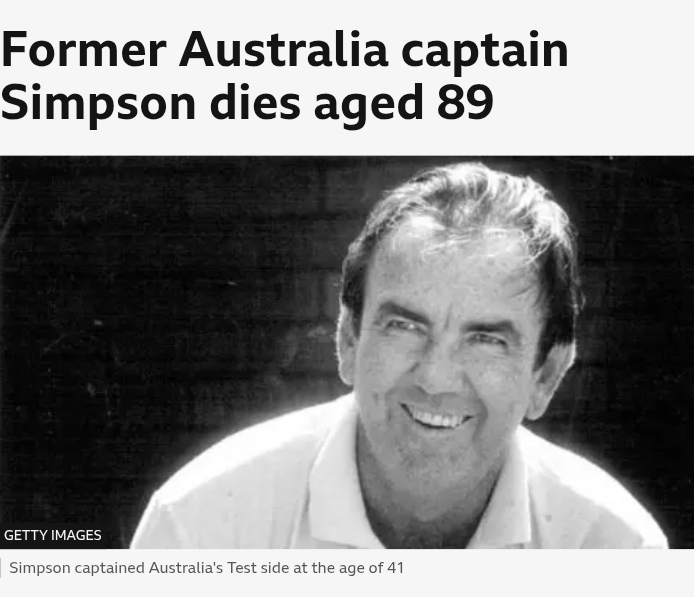Bob Simpson’s Legacy: Customer Experience Lessons from an Australian Cricket Icon
Let’s dive into the fascinating story of Bob Simpson, one of Australia’s greatest cricketers, and discover how his approach to leadership, coaching, and teamwork offers profound lessons in Customer Experience (CX). While Simpson’s name rings loud in cricketing circles, his methods and mindset resonate in today’s business world—especially if you care about how customers feel and connect with your brand.
The Early Days: Passion Ignites Performance
Bob Simpson didn’t just stumble into greatness; he chased it from a young age. Imagine a 14-year-old smashing an unbeaten century in competitive Sydney cricket. Right after, he dominated junior tournaments, setting records and earning quick promotions. By age 16, Bob had reached top-grade club cricket. Shortly after, he debuted for New South Wales.
What stands out? Simpson’s hunger to improve. He soaked up feedback, worked relentlessly on technique, and grew stronger with every challenge. In CX, that passion for improvement makes all the difference. When you nurture authentic excitement in a team, customers feel it. Just like Simpson learned from tough moments on the field, organizations must embrace customer complaints and use them to grow.
Building Trust: Cricket’s Version of Relationship-Building
During the 1960s, Simpson partnered with Bill Lawry to form Australia’s most successful opening duo. Their chemistry helped them set a national record for a first-wicket partnership—382 runs against the West Indies. Both trusted each other’s judgment, communicated clearly, and balanced each other’s strengths.
In customer experience, trust is everything. Customers must feel confident that brands understand their needs and will deliver every time. Simpson’s approach: understand your partner (or customer), adapt quickly, and show up prepared. Building this kind of trust turns one-time customers into loyal fans.
The Power of Consistency: From Player to Captain
Bob Simpson’s journey wasn’t always a straight line, though. He waited for 30 Tests before scoring his first century, finally notching an incredible 311 against England in 1964. The world watched as he remained patient, consistent, and positive through years of scrutiny.
Why does this matter in customer experience? Consistency builds reputation. If your support team delivers the same care every time—through every channel—customers know what to expect and feel safe returning again and again. Simpson’s methodical style reminds us: impressing customers isn’t about one big moment; it’s about getting the basics right every single time.
Leading by Example: Coaching and Mentorship
Simpson’s move from player to coach marked a huge turning point, both for him and the Australian team. He started as captain, then transitioned to coaching during the mid-1980s when Australian cricket was struggling. Simpson introduced discipline, focus, and high standards. At first, players resisted his tough methods. However, they soon discovered that his guidance produced results, especially after Australia’s unexpected win at the 1987 World Cup.
What can your business learn here? Leaders set the tone for CX. When leaders prioritize clear communication, rigorous training, and honest feedback, the team responds. You cannot fake excellence. Simpson’s attention to detail—in everything from fielding drills to team meetings—shows that caring about the little things makes the biggest difference in customer experience.
Handling Customer Feedback: Lessons from Slip Fielding
Simpson was famous for his slip fielding. He took 110 catches in 62 Tests—exceptional for his era. He trained hard, refined his positioning, and helped teammates improve their skills. This intense focus on slip catching relates to how organizations handle customer feedback and complaints.
Consider every complaint as a chance to “take a catch.” Instead of viewing feedback as a nuisance, see it for what it is—a golden opportunity to learn, enhance, and engage. Simpson’s coaching created a culture where players welcomed constructive criticism. Similarly, organizations need to nurture a feedback-friendly culture and treat every customer interaction as precious.
Embracing Change: Simpson’s Comeback Story
At age 41, Simpson returned to the Australian Test team after nearly a decade away. He did not just survive; he thrived, leading a young team and outperforming expectations. In business, leaders must often step out of retirement or comfort zones and confront sudden changes. Simpson’s adaptation shows that experience, resilience, and open-mindedness create value—even in unfamiliar territory.
For CX professionals, embrace change. Whether it’s new technology or evolving customer expectations, adaptability is essential. Just as Simpson adjusted his game for a new generation, brands must continually reinvent themselves to stay relevant.
Building Champions: Mentoring Future Stars
Bob Simpson deeply impacted future cricket legends while coaching Australia. Players like Steve Waugh, Shane Warne, and Ricky Ponting benefited from his tireless mentoring. He didn’t just instruct; he listened, challenged, and encouraged.
That personalized attention is the heart of great customer experience. When companies personalize interactions, customers feel valued and understood. Simpson’s legacy proves that creating champions—whether athletes or satisfied customers—is the result of sincere attention to individuals.
Data and Details: The Analytics Side of CX
Simpson’s career wasn’t just about flair. His Test average: 46.81. He scored over 4,800 runs and took 71 wickets as a leg spinner. As coach, he led Australia to the 1987 World Cup victory and Ashes triumphs. Every achievement was the result of rigorous data analysis, endless practice, and thoughtful strategy.
In CX, use data to drive decisions. Study customer journeys, spot where friction occurs, and make changes using real insights. Just as Simpson refined field placements and batting orders through analysis, brands must track, measure, and adjust until they perfect the customer experience.
Recognition and Reflection: What Lasts in CX
Simpson’s influence earned him honors like the Sport Australia Hall of Fame, Wisden Cricketer of the Year, and ICC Hall of Fame recognition. These awards reflected a consistent commitment to improvement.
Outstanding customer experiences don’t happen overnight. They take years of dedication, learning, and refinement. Simpson’s story reminds us that lasting impact depends on a culture of care, excellence, and humility.

Transitioning to Analytical Depth: The CX Takeaways
After exploring Simpson’s journey, the parallels to CX become clear. Passion leads to improvement. Trust and consistency sustain loyalty. Coaching turns potential into excellence. Handling feedback gracefully fuels change. Adaptability ensures survival in shifting landscapes. Mentoring shapes future stars. Data analysis powers refinement. Recognition comes only after dedication.
Every role Bob Simpson held—player, captain, coach, mentor—required empathy, focus, and unwavering standards. On the cricket field, he built trust within teams and inspired individuals. In the business realm, adopting these values transforms ordinary customer experiences into extraordinary ones.
Final Thoughts: Applying Simpson’s Wisdom
Start with passion. Cultivate trust. Deliver consistently. Welcome feedback and use it for growth. Lead by example and embrace change. Personalize every interaction. Let data guide you, but never ignore empathy. Over time, build a reputation for care and excellence—just as Bob Simpson did for Australian cricket.
Companies who absorb these lessons will earn loyal customers, build high-performing teams, and be fondly remembered—not only for products and services, but for experiences that truly stand out. Bob Simpson’s legacy is not just about runs, wickets, and catches; it’s about how commitment to service, teamwork, and personal growth creates lasting greatness in any field.

